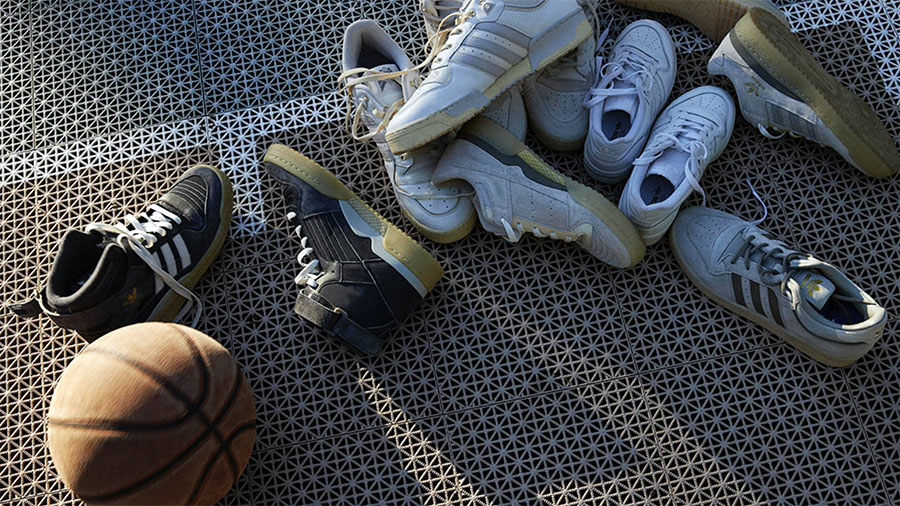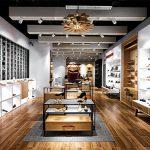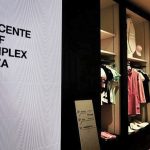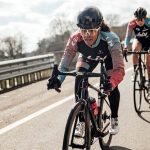On Adidas’ third-quarter conference call with analysts, Bjorn Gulden, CEO, said Adidas’ sales in the U.S. “will probably not grow at all in the first half” of 2024 as North America lags other regions in rightsizing inventory levels.
On Wednesday, Adidas reported overall inventories were down 23 percent on a global basis at the close of the third quarter, positioning the company for improved sell-throughs in the first half of 2024 and a return to positive bookings in the second half. Inventory levels in the retail marketplace were also said to be improving, although at a slower pace.
However, Adidas warned that elevated inventory levels in the U.S. will continue to impact the U.S. business for a while.
“Inventory levels in the U.S. in general is still an issue,” said Gulden on the call. “I think it lags about six months versus the rest of the world.”
He suspects the U.S. should see “some growth in the second half,” although he noted that it may depend on whether the company restarts selling its remaining Yeezy inventory.
In releasing third-quarter results, Adidas said it paused all Yeezy product drops for the remainder of the year and is exploring the possibility of no longer selling any Yeezy products. Adidas has €300 million ($321 million) worth of Yeezy stock left following two releases earlier this year.
Currency-neutral sales in North America declined 9 percent during the quarter, becoming the only region to show a decline for Adidas. Excluding sales of remaining Yeezy inventory, currency-neutral sales in North America were down 10 percent year over year.
The decline reflects a plan to significantly reduce sell-in to rebalance inventory levels. As a result, wholesale revenues were down double digits in the region, whereas DTC sales increased versus the prior-year level.
Gulden noted that the 9 percent sales slump in the quarter marked improvement sequentially versus declines on a currency-neutral basis of 16 percent in the second quarter and 20 percent in the first quarter. Nonetheless, he added, “We still have issues in our American business that we have to work through.”
He noted that Adidas continues to see “high discounts” amid the inventory imbalances, and is consequently planning the business “to be very conservative in the way we sell product in for the next six months”
To address the challenges, Gulden noted that, as reported, Rupert Campbell, president of Adidas North America since January 2022, “resigned and ended his great career with Adi at the end of October.” Executive board member Arthur Hoeld, who leads global sales, will oversee the region “as an interim solution,” according to Gulden. A permanent successor is expected to be named in the first quarter
“It should not be a surprise that we’re looking for an American citizen,” said Gulden. “The issues in the market haven’t really changed. There is still elevated inventory, both in the trade and also in our own books. And especially, the successful outlet business is then almost only clearance business, which has a drag on both sales and on margin.”
Beyond elevated inventories, Gulden stressed that Adidas has to elevate demand in the U.S., citing the importance of opening a new office complex in Los Angeles that’s expected to particularly support its lifestyle and performance units within the basketball category.
“I told you about this before, but we need to be more American,” said Gulden. “That’s why the office that we opened in L.A. in Q1 is so important. It will focus on the American street culture, also connected to basketball. And all of American partnerships when it gets to collab and street culture relevant collabs will then be managed out of L.A. And I think this is a game-changing thing for us.”
Gulden suspects the expanded Los Angeles offices won’t have an impact on production until the second or third quarter of 2024.
Some positive developments in the U.S. market include the performance of the brand’s full-price concept stores, which are comping positively with higher margins. Stores showing double-digit comps include 5th Avenue and Soho flagships in New York City, supported by a collaboration with Moncler, a Terrace launch and the start of the Major League Soccer season. Strong sales have continued at Adidas’ Miami Lincoln Road location since Lionel Messi joined the Major League Soccer club Inter Miami. Other stores doing well include a new concept store at The Mall at Bay Plaza in the Bronx, NY, as well as outlet locations at Orlando International and San Clemente, CA factory outlet.
Said Gulden, “It clearly shows that the consumer is reacting very positively even in the U.S. to our new merchandise.”
Among its ambassadors, Messi playing in the U.S. continues to help drive credibility for Adidas. Gulden said, “When you see his pink jersey is the most sold jersey in the U.S., I think, ever. And, of course, it has had an impact on what we call also ‘soccer street culture’ in the U.S. We’re extremely happy that he went there instead of going somewhere else.”
As a sponsor of Nebraska, the Adidas brand was also “part of the biggest women’s event ever,” when 92,000 fans in late August witnessed Nebraska’s women’s volleyball team beat Omaha in Nebraska’s Memorial Stadium to mark the largest crowd ever at a women’s sports event. Gulden commented, “One of the small pieces in the focus on women’s sports that I think is going to be very important also going forward.”
Among key ambassadors in the U.S. market, Gulden noted that Anthony Edwards, of the Minnesota Timberwolves and captain of the U.S. national team, launched his first signature shoe in September that’s now being rolled out. Gulden said, “We expect actually a lot of good stuff coming out of that cooperation.”
He also highlighted Adidas’ partnership with Patrick Mahomes, the Kansas City Chiefs’ two-time NFL MVP and two-time Super Bowl MVP. Said Gulden, “Patrick Mahomes probably being the — what should I say? — not only the best, but the coolest player in the NFL. He was also in Frankfurt last week. We just launched his collection, his training shoe, and we will do more products with him, branded with him. And I’m very, very, very sure that we can market him as a superstar and also get much more commercial success of him, especially in the U.S.”
He also noted that Adidas signed a number of college athletes in American football to NIL agreements, including Rome Odunze, wide receiver for the Washington Huskies and Michael Penix Jr., the Huskies’ quarterback. Gulden said, “It’s clear to say that both college and high school sports for us connecting to the sports youth culture in the U.S. is going to be important.”
In the performance category, Gulden noted the U.S. sports business is seeing growth. Basketball is growing double-digits while Adidas has a “very healthy business” in American football. Gulden said of Adidas’ recent success in American football, “That tells us that if we build the right product for America, we can actually also be good in the U.S. sports.”
Photo courtesy Adidas
















